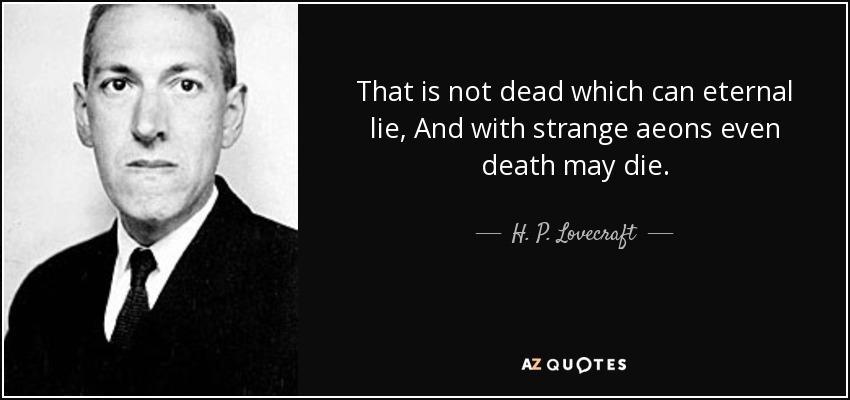Short Story Review – The Nameless City by H.P. Lovecraft
This is the equivalent of phoning it in from me, and I am sorry. The point of daily reviews was to push myself to read more and different authors, but life happens. I didn’t get a chance to properly read and review a new story today. So let’s go back and take a look at an old story that I recently had occasion to revisit. The Nameless City by H.P. Lovecraft. This story is, I believe, the first mention of the author of The Necronomicon, and I believe it is also the first instance of this quote that everyone knows:

The Nameless City features an equally Nameless Protagonist who travels to the heart of the Arabian desert in search of a city so ancient that it predates all known human cities. The protagonist seems to be some kind of archaeologist, but it’s unclear if he’s an amateur. For whatever reason, he’s visiting these ruins alone. He is not the discoverer of the ruins. He talks about all the other people who know about the ruins and shun them. He does seem to be the first person brave/dumb enough to explore them. Unless you count Abdul Alhazred, which Lovecraft probably would not for…reasons.
As he explores, he finds temples that are shaped to dimensions that are too small for a human to move around comfortably. In true Lovecraft fashion the game is given away pretty early on. It’s obvious to the reader that the civilization that constructed this city was not a human one. And as Lovecraft explores on, he realizes what Abdul Alhazred meant when he wrote “that is not dead which can eternal lie.”
This story would seem to be the precursor to At The Mountains of Madness. Most of these ideas are reused there, and to better effect. Which is not to say that At The Mountains of Madness is not deeply flawed. If you’re interested, I forced Nate to read Mountains of Madness last year. We go into a lot more detail there.
Just about every Lovecraft story suffers from similar problems. He has some interesting ideas about cosmic horror, but no idea how to execute them. The story drags on much too long. The twist is obvious to any half awake person from page 2. This isn’t always a problem, but Lovecraft relies so much on the shocking reveal that he’s really shooting himself in the foot.
We have a common Lovecraft conceit in the nameless protagonist learning absolutely everything there is to know about an ancient civilization from a mural/carving/artifact, and yet somehow still failing to put together the clues to the cosmic horror until the very last second. “Show don’t tell,” is not a concept that Lovecraft ever embraced. Mercifully, though, this one is much lighter on the racism than many of his other stories.
Final Verdict
I think once upon a time I might have given this more just for having an interesting idea, but compared to everything else I’ve been reading this month it doesn’t hold up. This isn’t even the best version of this story that is written by H.P. Lovecraft.
2 arbitrary stars out of 10 arbitrary stars.





